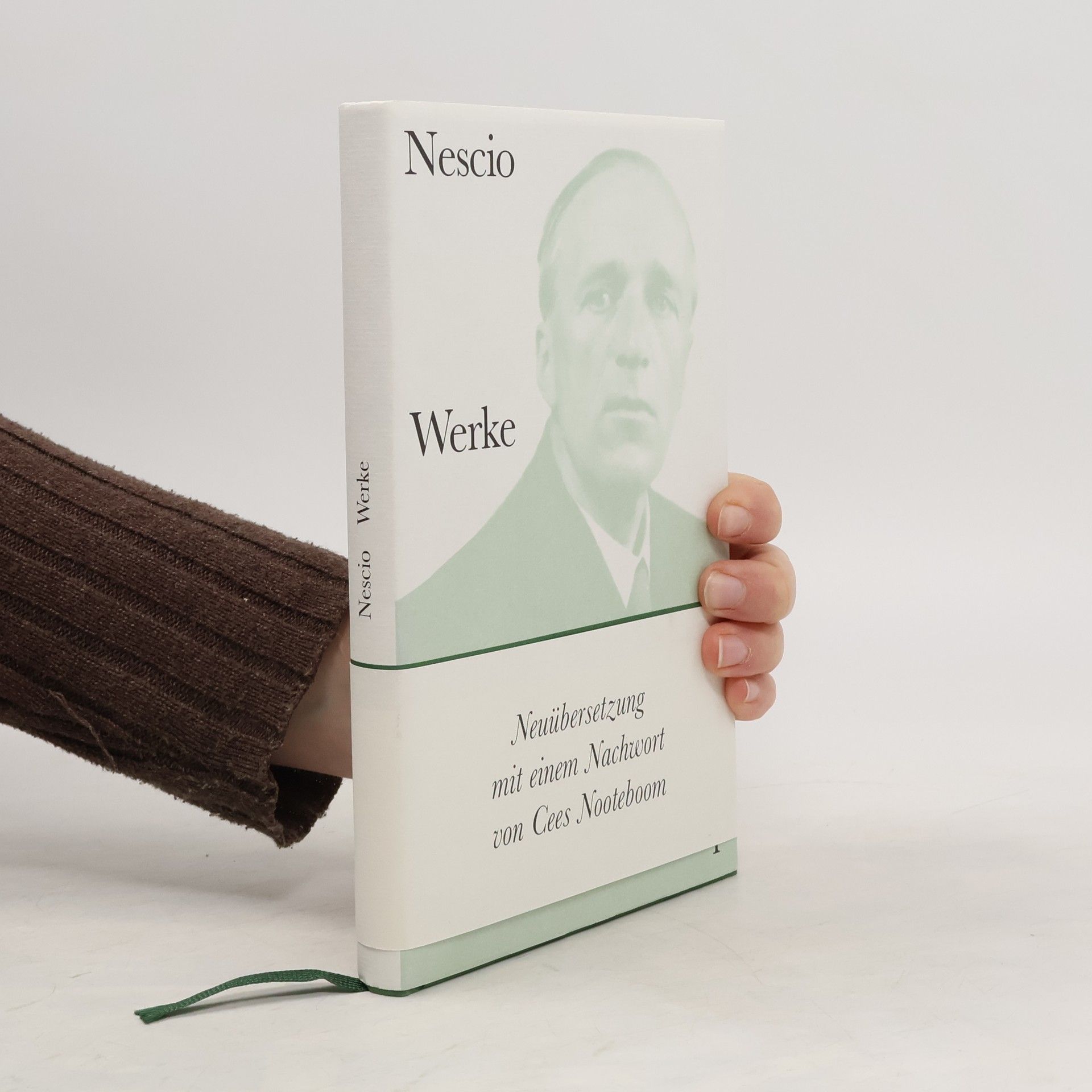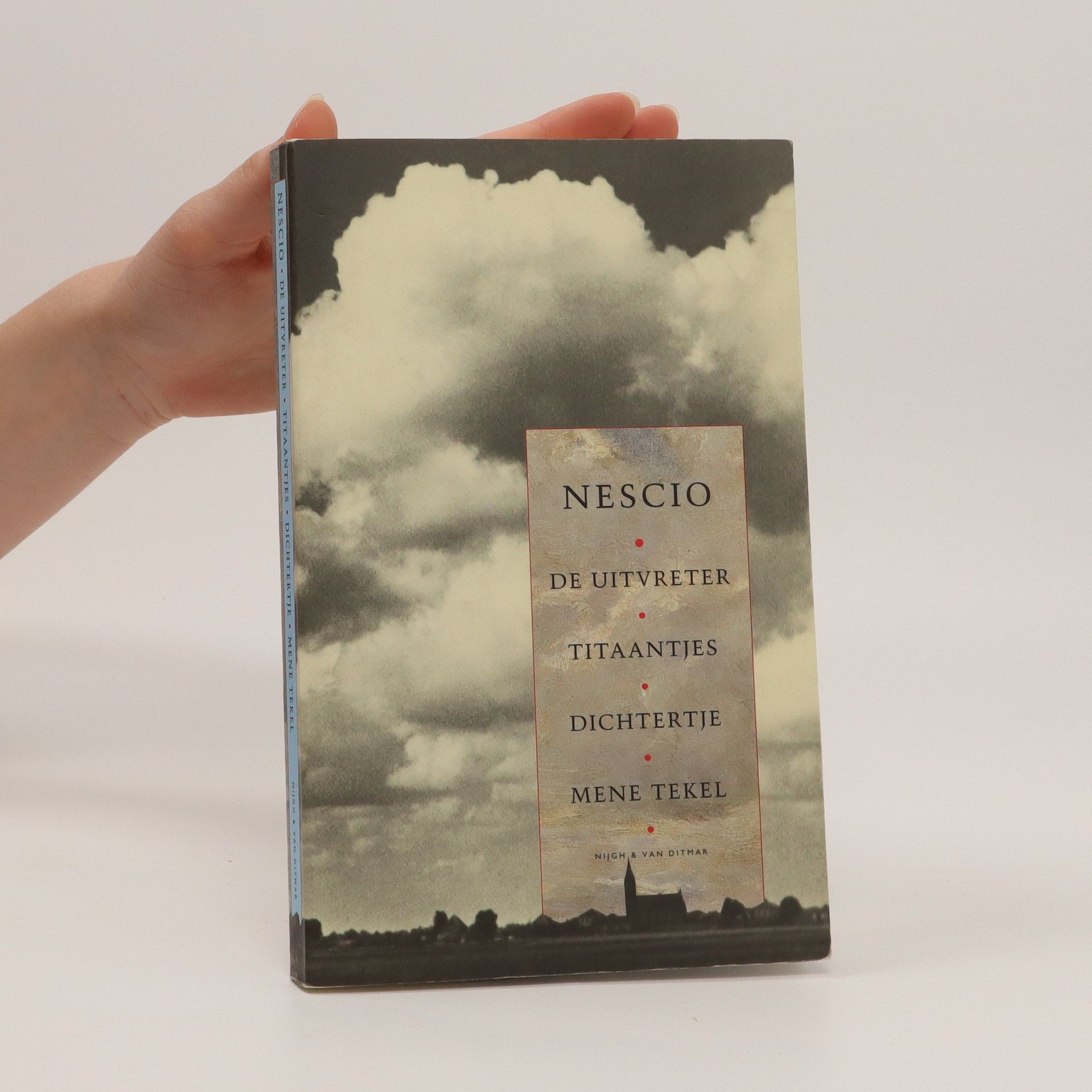No one has written more feelingly and more beautifully than Nescio about the madness and sadness, courage and vulnerability of youth: its big plans and vague longings, not to mention the binges, crashes, and marathon walks and talks. No one, for that matter, has written with such pristine clarity about the radiating canals of Amsterdam and the cloud-swept landscape of the Netherlands. Who was Nescio? Nescio—Latin for “I don’t know”—was the pen name of J.H.F. Grönloh, the highly successful director of the Holland–Bombay Trading Company and a father of four—someone who knew more than enough about respectable maturity. Only in his spare time and under the cover of a pseudonym, as if commemorating a lost self, did he let himself go, producing over the course of his lifetime a handful of utterly original stories that contain some of the most luminous pages in modern literature. This is the first English translation of Nescio’s stories.
Nescio Libri
Questo autore olandese, che scriveva sotto lo pseudonimo di Nescio, ha creato una prosa considerata oggi tra le migliori della lingua olandese. Nonostante abbia riconosciuto pubblicamente la sua paternità letteraria in età avanzata per proteggere la sua carriera professionale, la sua eredità letteraria è profonda. Le sue opere sono celebrate per lo stile unico e la profondità di intuizione che offrono ai lettori. Nescio ha lasciato un segno indelebile nella letteratura olandese attraverso la sua magistrale padronanza della lingua e le sue penetranti osservazioni.



Sie haben große Pläne, sie wollen raus, wollen es ganz anders machen als die etablierten Bürger, sie schwadronieren, trinken, rauchen und lesen Bücher. Irgendwann werden sie klüger. Nur Bavink nicht. Bavink dreht durch. Die Helden in diesem Band sind junge Bohemiens im Amsterdam des beginnenden 20. Jahrhunderts, unbezähmbare Idealisten, die die Welt des Geldes und der Ordnung verachten und ihren eigenen Weg suchen. Der führt nicht immer zum Erfolg – »doch bevor wir ein Leichentuch des Pessimismus über diesen verfehlten Elan werfen, sollten wir bedenken, dass aus ihm großartige Erzählungen entstanden sind, in denen sowohl der Enthusiasmus als auch das Scheitern ... auf wundersame Weise lebendig geblieben sind.« (Cees Nooteboom) Keiner hat lakonischer und schöner über Draufgängertum und Sehnsüchte junger Menschen, über ihre wilden Träume und ihre Verletzlichkeit geschrieben als Nescio. Von ihm, dem seriösen Geschäftsmann, dem genauen Gegenteil seiner Figuren, wurden zu seinen Lebzeiten nur eine Handvoll Erzählungen veröffentlicht, die bis heute von ihrer Kraft nichts verloren haben.